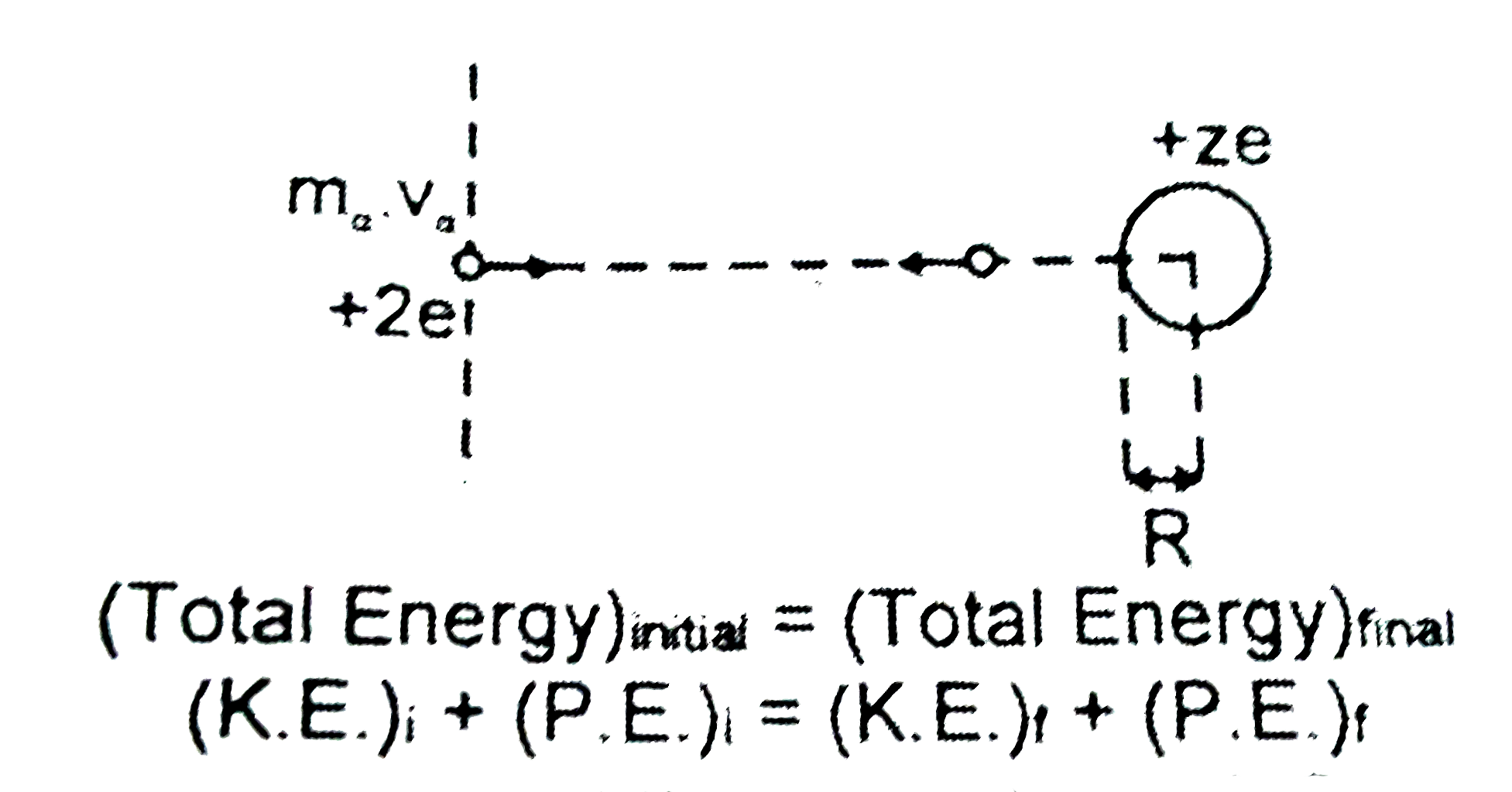Enlist the conclusions drawn by Rutherford from his -ray scattering experiment.
Step-by-Step Solution:
1. Observation of Alpha Particles:
- Rutherford conducted the alpha-ray scattering experiment using a thin gold foil and observed the behavior of alpha particles when they were directed at the foil.
2. Conclusion on Empty Space:
- Most of the alpha particles passed straight through the gold foil without any deflection.
- Conclusion 1: This indicates that most of the space in an atom is empty.
3. Conclusion on Positive Charge:
- A small number of alpha particles were deflected at various angles.
- Conclusion 2: This suggests that the positive charge within the atom occupies a very small space, indicating the presence of a concentrated positive region.
4. Conclusion on Nucleus:
- A very small fraction of alpha particles were deflected back at an angle of 180 degrees.
- Conclusion 3: This indicates that the positive charge and mass of the atom are concentrated in a very small volume, leading to the conclusion that there is a nucleus at the center of the atom.
5. Definition of Nucleus:
- The nucleus contains protons and neutrons, which together account for most of the atom's mass and positive charge.
Final Conclusions:
- Most of the atom is empty space.
- The positive charge is concentrated in a small area (the nucleus).
- The nucleus contains most of the atom's mass.
---
- Rutherford conducted the alpha-ray scattering experiment using a thin gold foil and observed the behavior of alpha particles when they were directed at the foil.
- Most of the alpha particles passed straight through the gold foil without any deflection.
- Conclusion 1: This indicates that most of the space in an atom is empty.
- A small number of alpha particles were deflected at various angles.
- Conclusion 2: This suggests that the positive charge within the atom occupies a very small space, indicating the presence of a concentrated positive region.
- A very small fraction of alpha particles were deflected back at an angle of 180 degrees.
- Conclusion 3: This indicates that the positive charge and mass of the atom are concentrated in a very small volume, leading to the conclusion that there is a nucleus at the center of the atom.
- The nucleus contains protons and neutrons, which together account for most of the atom's mass and positive charge.
- Most of the atom is empty space.
- The positive charge is concentrated in a small area (the nucleus).
- The nucleus contains most of the atom's mass.
Similar Questions
Knowledge Check
Which of the following conclusions could not be derived from Rutherford's α-particle scattering experiment?
AMost of the space in the atom is empty.BThe radius of the atom is about 10−10m while that of nucleus is 10−15m.CElectrons move in a circular path of fixed energy called orbits.DElectrons and the nucleus are held together by electrostatic forces of attraction.A conclusion drawn from the passage is that:
Afear of failure removes complacency in a person.Bfear of failure is necessary for one to value success.Cfailure is the growth factor as one learns from it and grows.Dthe loss of faith and hope is believed to arise from failureWhich of the following conclusions regarding the structure of atom is based on Rutherford's α-particle scattering experiment?
AThe positive charge is concentrated in a very small volume of the atom.BThe positive charge is scattered with the electrons throughout the atom.CThe volume occupied by the nucleus is half of the volume of atom.DMost of the space in the atom is occupied by the neutrons.
Why did Rutherford select a gold foil in his α-ray scattering experiment ?
View SolutionWhich of the following conclusions couldnot be derived from Rutehrford's α-particle scattering experiment?
View SolutionWhat conclusion is drawn from Rutherford.s scattering experiment of α-particles?
View SolutionFill in the blanks in the following statements.
(a) Rutherford's α-particle scattering experiment lead to the discovery of the …….. .
(b) Isotopes have same……… but different……. .
(c) Neon and chlorine have atomic numbers 10 and 17 respectively. Their valencies will be...... and........ respectively.
(d) The electronic configuration of silicon is .......... and that of sulphur is........ .
View SolutionRutherford model: The approximate size of the nucleus can be calculated by using energy conservation theorem in Rutherford's α-scattering experiment. If an α-particle is projected from infinity with speed v towards the nucleus having Z protons, then the α-particle which is reflected back or which is deflected by 180∘ must have approached closest to the nucleus .It can be approximated that α particle collides with the nucleus and gets back. Now if we apply the energy conservation equation at initial point and collision point then:

(P.E.)i=0, since P.E. of two charge system separated by infinite distance is zero. Finally the particle stops and then starts coming back.
12mαv2α+0=0+Kq1q2R⇒12mαv2α=K2e×ZeR⇒R=4KZe2mαv2α
Thus the radius of nucleus can be calculated using above equation. The nucleus is so small a particle that we can't define a sharp boundary for it
An α-particle with initial speed v0 is projected from infinity and it approaches up to r0 distance from a nuclie. Then, the initial speed of α-particle, which approaches upto 2r0 distance from the nucleus is :
View Solution
